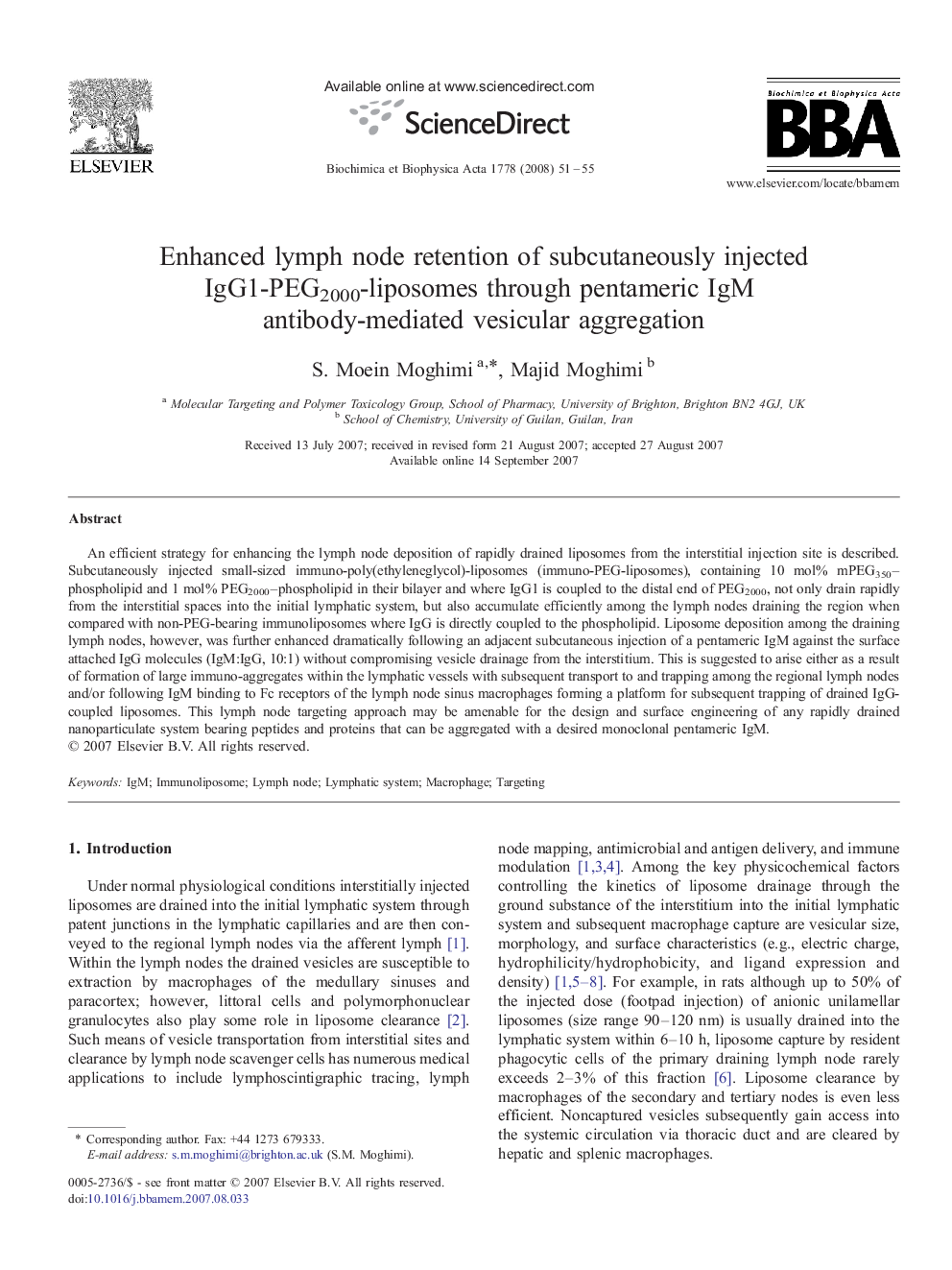| کد مقاله | کد نشریه | سال انتشار | مقاله انگلیسی | نسخه تمام متن |
|---|---|---|---|---|
| 1945544 | 1053268 | 2008 | 5 صفحه PDF | دانلود رایگان |

An efficient strategy for enhancing the lymph node deposition of rapidly drained liposomes from the interstitial injection site is described. Subcutaneously injected small-sized immuno-poly(ethyleneglycol)-liposomes (immuno-PEG-liposomes), containing 10 mol% mPEG350–phospholipid and 1 mol% PEG2000–phospholipid in their bilayer and where IgG1 is coupled to the distal end of PEG2000, not only drain rapidly from the interstitial spaces into the initial lymphatic system, but also accumulate efficiently among the lymph nodes draining the region when compared with non-PEG-bearing immunoliposomes where IgG is directly coupled to the phospholipid. Liposome deposition among the draining lymph nodes, however, was further enhanced dramatically following an adjacent subcutaneous injection of a pentameric IgM against the surface attached IgG molecules (IgM:IgG, 10:1) without compromising vesicle drainage from the interstitium. This is suggested to arise either as a result of formation of large immuno-aggregates within the lymphatic vessels with subsequent transport to and trapping among the regional lymph nodes and/or following IgM binding to Fc receptors of the lymph node sinus macrophages forming a platform for subsequent trapping of drained IgG-coupled liposomes. This lymph node targeting approach may be amenable for the design and surface engineering of any rapidly drained nanoparticulate system bearing peptides and proteins that can be aggregated with a desired monoclonal pentameric IgM.
Journal: Biochimica et Biophysica Acta (BBA) - Biomembranes - Volume 1778, Issue 1, January 2008, Pages 51–55